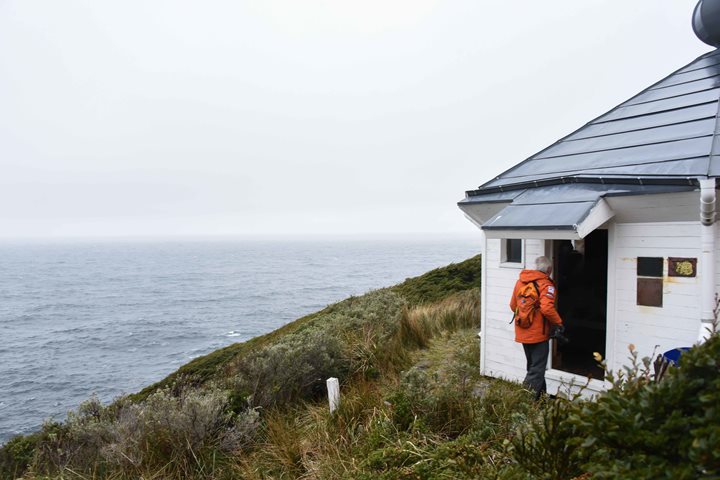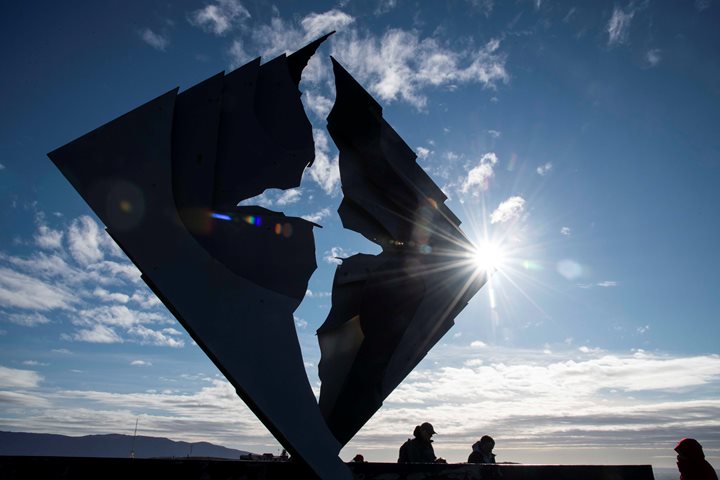The guests onboard National Geographic Explorer awoke to a beautiful, calm Saturday morning at sea, headed for Cape Horn.
Cape Horn is often referred to as “el fin del mundo,” or the end of the world. The landmark has been regarded for centuries as some of the most treacherous water in the world, as the region’s enormously strong, westerly winds and ocean swell have taken countless ships, along with the lives of their sailors. This iconic location marks the northern boundary of the infamous Drake Passage. The Atlantic and Pacific oceans meet here, creating an incredibly productive and diverse ocean.
The conditions were calm enough to offer a landing ashore—an incredibly rare event. The landing is home to a short staircase leading up to the dedication to those lost at sea, an albatross statue. As the guests climbed the staircase to the windy peak, the naturalists offered brief history lessons and scouted for the endemic and incredibly rare snipe, a small bird whose call has never been recorded.
The undersea team went out for a morning dive after bringing guests ashore. This area of the world has giant kelp, the same species that exists on the west coast of the U.S. Giant kelp is a brown alga that can reach 100 feet in height, creating an incredible underwater forest. During peak growth season, this species can grow up to two feet per day. All parts of the organism are photosynthetic, making it a very efficient grower. This habitat acts as a natural nursery for juvenile fish and invertebrates as well as a thriving hunting ground for larger critters such as adult fish and marine mammals. As the ship moved further south, the temperature crept lower, resulting in near-polar conditions on today’s dive, at 39 degrees Fahrenheit. The visibility was incredible, and the underwater naturalists saw soft corals, many species of sea star, nudibranchs, and a variety of mollusks.
In the afternoon, the ship left Chile and sailed into Argentina, closing one chapter of the voyage and moving forward into another. With glacial Patagonia behind us and Isla de los Estados ahead, National Geographic Explorer steamed forward toward the lighthouse at the end of the world.









